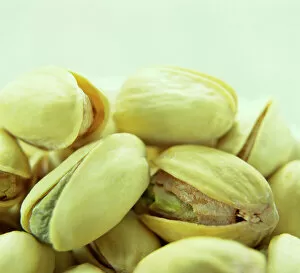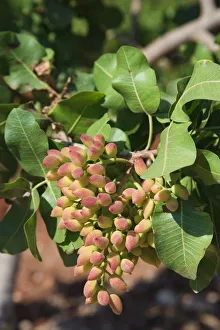Pistacia Vera Collection
"Pistacia vera: The Nutty Delight from Syria's Hama Pistachio Plantations" Indulge in the exquisite taste of pistachio nuts, also known as "Pistacia vera
All Professionally Made to Order for Quick Shipping
"Pistacia vera: The Nutty Delight from Syria's Hama Pistachio Plantations" Indulge in the exquisite taste of pistachio nuts, also known as "Pistacia vera, " originating from the fertile lands of Syria, particularly Hama. These delectable treats belong to the fruits en baies category and are cherished for their unique flavor and nutritional benefits. Captured beautifully by Francois Turpin, an illustration showcases the elegance of the Syrian Pistachio Plantation (Pistacia vera), where these precious nuts thrive abundantly. From above view shots revealing a bounty of shelled pistachios spilling out from bags to those still encased within their brown paper shells, every image tells a story of nature's generosity. Henry Louis Duhamel du Monceau's botanical plates, skillfully crafted by Pierre Jean Francois Turpin, further emphasize the magnificence of Pistachia vera. These illustrations capture intricate details that highlight its distinct features and allure. The pistachio tree (Pistacia vera) itself stands tall as a symbol of resilience and abundance. Its cultivation in Syria has not only provided livelihoods but also brought joy to countless palates worldwide. Whether enjoyed on their own or incorporated into various culinary creations, these versatile nuts never fail to impress with their rich taste and health benefits. So next time you savor a handful of shelled pistachios or admire an illustration depicting this remarkable nut, remember its journey from Syrian plantations to your plate. Let each bite be a celebration of nature's wonders and appreciate how Pistacia vera continues to captivate hearts around the globe.














